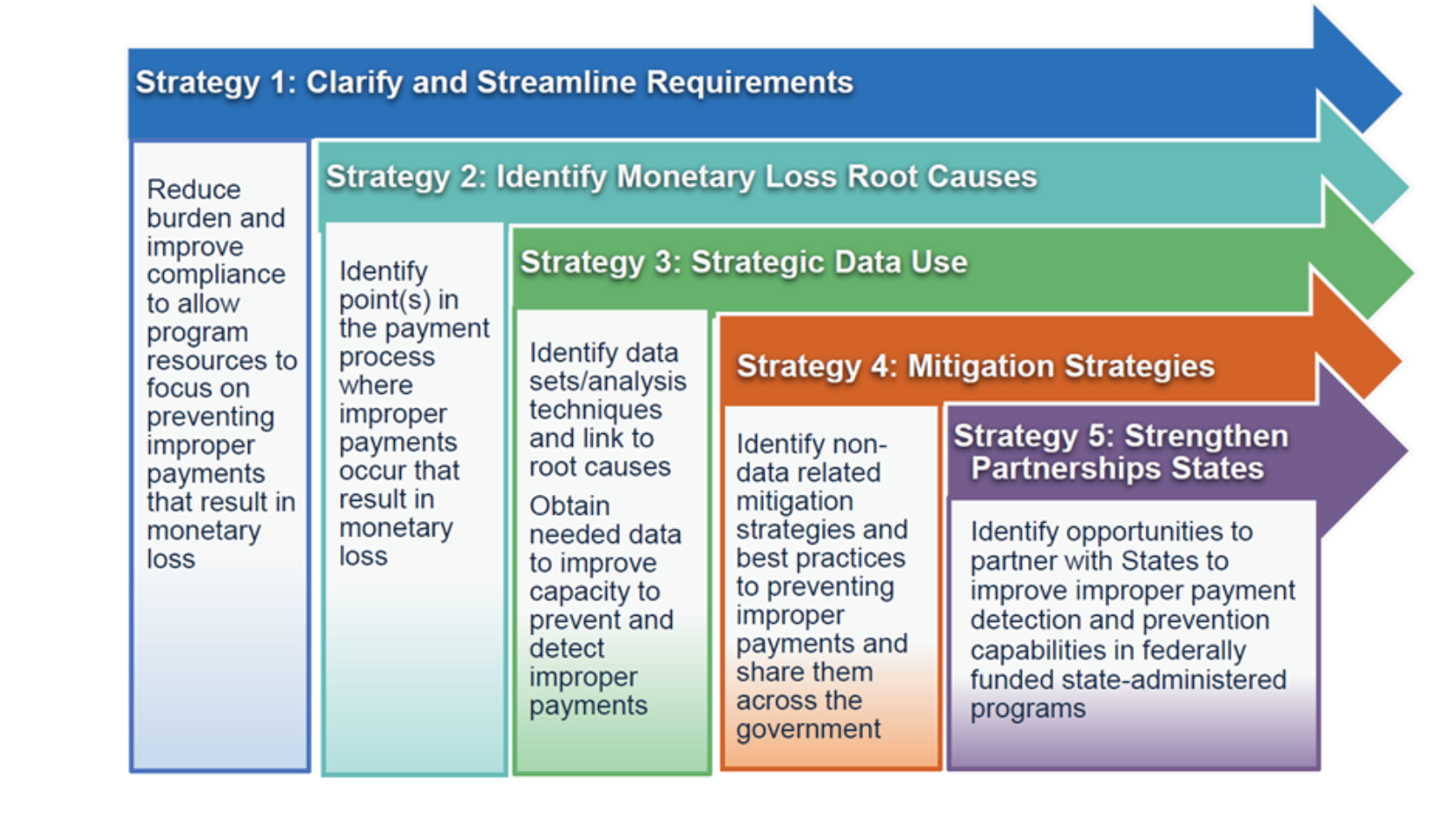
Payment Integrity
The Payment Integrity Priority Area is focused on demonstrating stewardship of taxpayer dollars by reducing monetary loss and making payments correctly the first time.
Below is the Executive Steering Committee organizational structure for the Payment Integrity Priority Area:
 Enlarge
Enlarge

- Office of Management and Budget
- Department of Labor
- Department of Treasury
- Department of Health and Human Services / Center for Medicaid and Medicare Services
09/16/2020
CAP Goal #9 “Getting Payments Right”
CAP Goal #9 “Getting Payments Right,” CAP Goal Action Plan slide deck updated and posted to Performance.gov, updating the strategy and goal leads and highlighting 2020 Q3 accomplishments.
04/08/2020
Initial meeting of CAP Goal #9 Working Group
Initial meeting of CAP Goal #9 Working Group - Root Causes and Eligibility Criteria Reporting. The Root Causes and Eligibility Criteria working group will seek to identify and categorize different eligibility root causes of improper payments.
12/16/2019
2019 Quarterly Key Priority Indicators posted to Paymentaccuracy.gov
2019 Quarterly Key Priority Indicators (KPI) Scorecards posted to Paymentaccuracy.gov and Performance.gov websites. KPI Scorecards are for high-priority programs to highlight quarterly goals and accomplishments.






